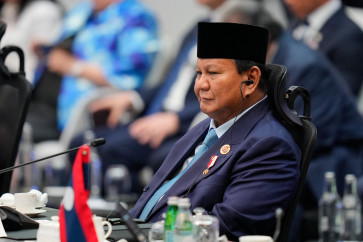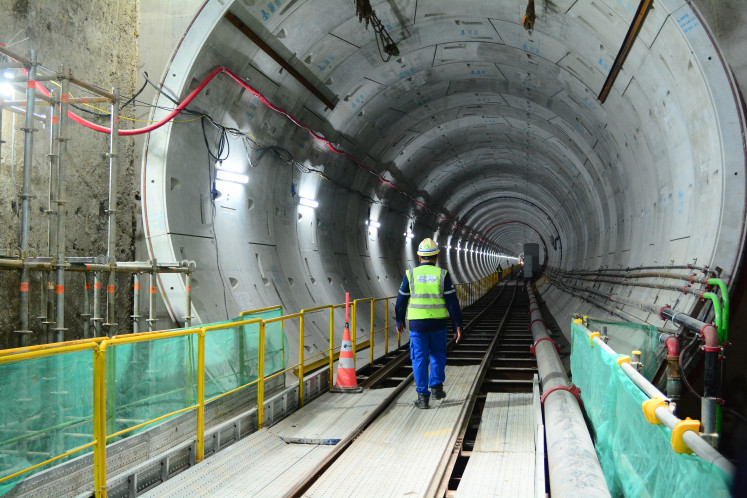Popular Reads
Top Results
Can't find what you're looking for?
View all search resultsPopular Reads
Top Results
Can't find what you're looking for?
View all search resultsHow 'we-mode' built civilization, and why it’s at risk
To stem the tide of “disembodied disconnect” as a symptom of the cyber age, digital technologies should be designed to enhance embodied social experiences that engage our uniquely human capacity to collaborate across diverse groups and engender deep social cohesion.
Change text size
Gift Premium Articles
to Anyone
H
umans possess a unique ability that sets us apart from other species: the capacity to collaborate, not just as individuals pursuing parallel goals, but also as truly unified collectives working toward shared objectives.
This distinctive way of thinking and acting, termed "we-mode”, represents a hidden human superpower, enabling achievements far beyond what any individual could accomplish alone. However, this crucial capability may be under threat in an increasingly digital world.
As philosopher Raimo Tuomela explains in Social Ontology (2013), we-mode refers to our ability to think and act as part of a collective "we" rather than as isolated individuals.
When operating in we-mode, people do not simply coordinate their separate actions; they genuinely share intentions, commitments and goals as a group. A sports team working in seamless synchrony, a community uniting in the aftermath of a disaster, or scientists collaborating on breakthrough research all exemplify we-mode in action.
This collective mindset brings powerful advantages. Groups functioning in we-mode can execute complex, coordinated actions, pool cognitive resources and develop shared knowledge that far exceeds individual capabilities. It enables the transmission of cultural knowledge across generations and the construction of increasingly sophisticated technologies and social structures.
Perhaps most importantly, we-mode fosters deep social bonds and shared identities that help sustain human communities.
Recent neuroscience research has uncovered fascinating insights into how we-mode is embedded in the brain. Three key neural systems work together to enable this collective consciousness.
First, specialized “place cells” in the hippocampus do more than track physical locations; they also encode social spaces and relationships. These cells create cognitive maps of our social world, positioning ourselves and others along dimensions such as power and affiliation. This spatial encoding helps us navigate group dynamics and understand our place within them.
Second, the mirror neuron system enables us to internally simulate others' actions and experiences. When we observe someone performing an action, mirror neurons activate as if we were performing it ourselves, providing a neural basis for understanding intentions and coordinating joint efforts. The neuropeptide oxytocin plays a crucial role in enhancing this system, attuning our brains to socially relevant information.
Perhaps most remarkably, when people engage in joint activities their brains can synchronize, displaying aligned patterns of neural oscillations. This “interbrain synchrony” has been observed during activities such as conversation, making music and cooperative tasks.
The more in sync people’s brains become, the better they coordinate and the stronger their sense of connection. This neural synchronization may be the biological foundation of truly shared experiences and collective consciousness.
While we-mode is a defining human capability, the shift toward screen-mediated social interactions may be weakening it. Digital technologies remove the physical boundaries that traditionally defined communities, offering unprecedented freedom in choosing social connections.
However, this comes at a cost: the loss of embodied social experiences that activate we-mode neural processes.
Online interactions often lack the behavioral synchrony, shared attention and emotional attunement that engage we-mode brain circuits. Without physical copresence, opportunities for interbrain synchronization are limited. While digital platforms connect people across vast distances, these connections may remain relatively shallow without the full engagement of our social neural systems.
This “disembodied disconnect” may help explain troubling societal trends, such as rising loneliness, political polarization and the weakening of community bonds. Digital communities often consist of like-minded individuals rather than diverse groups building genuine understanding across differences. The neural foundations of deep social cohesion may be harder to establish through screens alone.
Recognizing we-mode as a crucial human capacity, supported by specific neural systems, should guide how we design technology and structure society. While digital connections offer significant benefits, they must complement rather than replace the embodied social experiences that activate our we-mode circuits.
This could mean designing technologies that enhance joint attention and synchronous interaction while ensuring that opportunities for face-to-face engagement remain central to community life.
The human superpower of we-mode has enabled our species’ greatest achievements. As society navigates an increasingly digital future, protecting and strengthening this capacity will be essential for maintaining the social cohesion and collective intelligence that define us. The challenge is not to reject technology, but to integrate it in ways that preserve the neural foundations of genuine human connection.
---
The writer is director of the Humane Technology Lab (HTLAB) at the Catholic University of the Sacred Heart in Milan, Italy, where he is a professor of general and cognitive psychology. This article is republished under a Creative Commons license.











